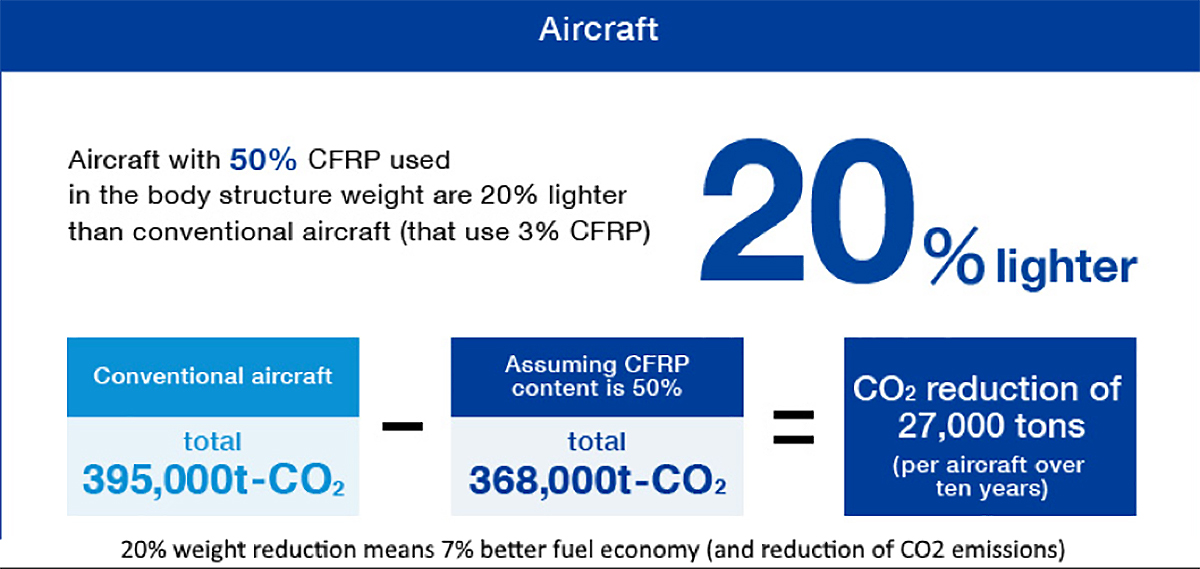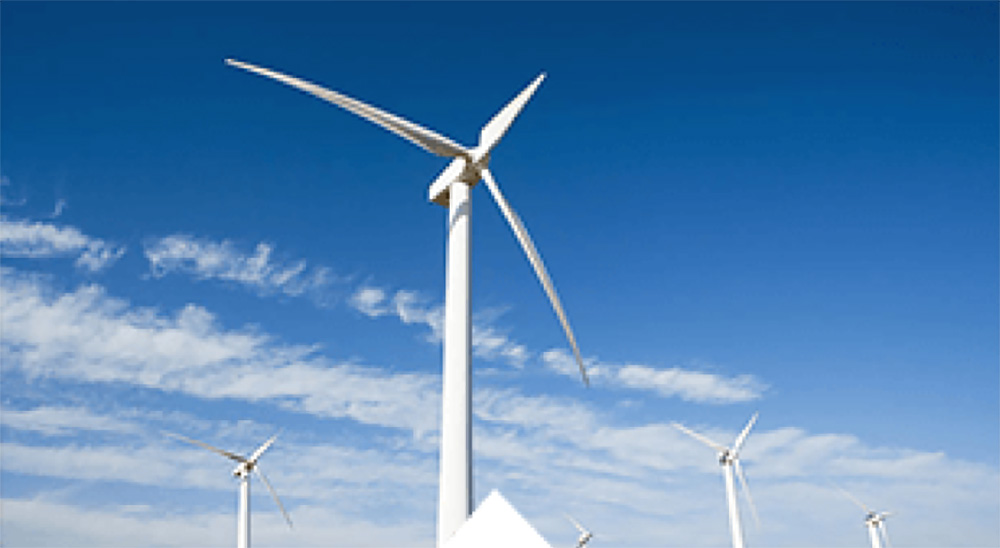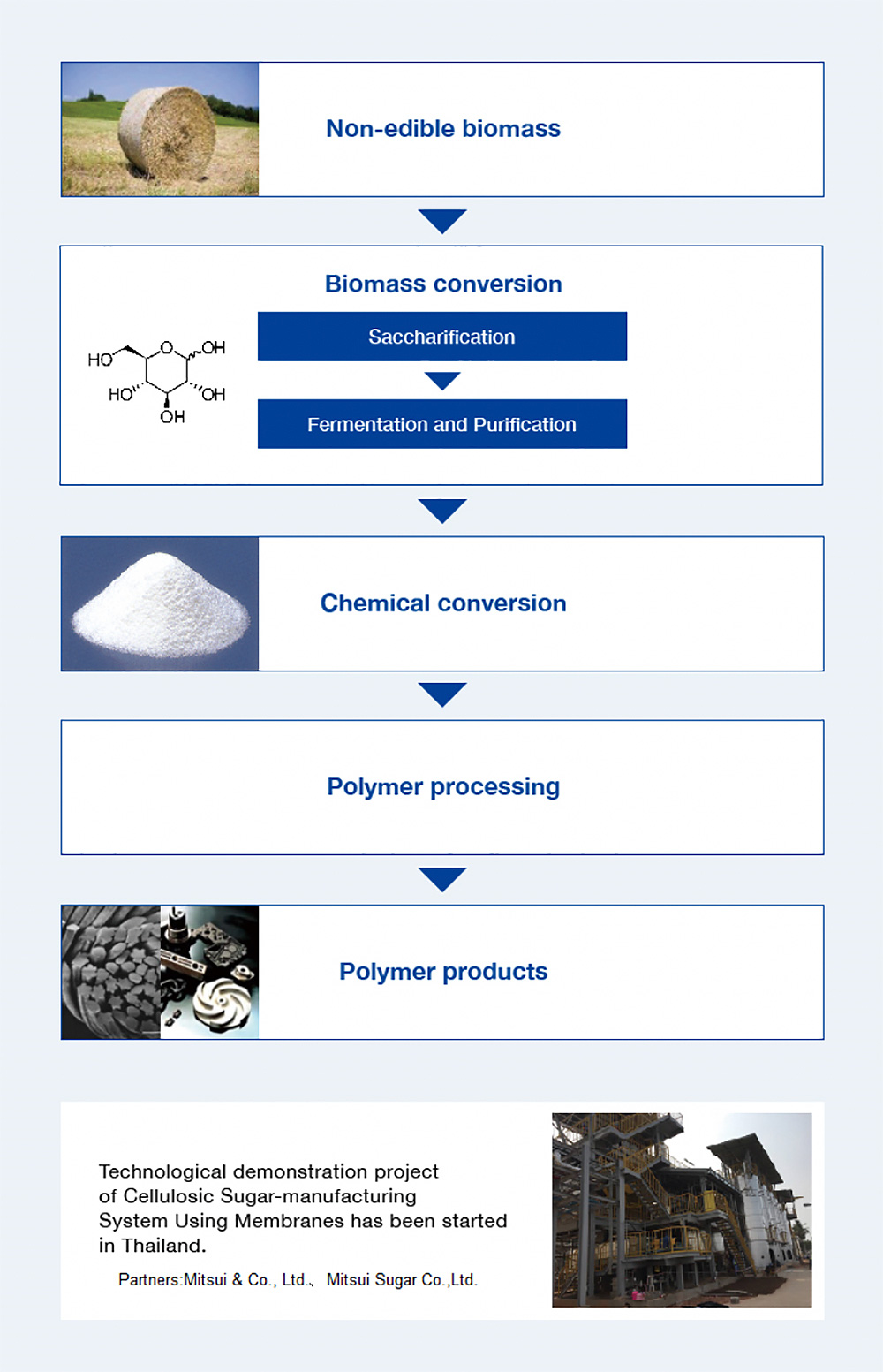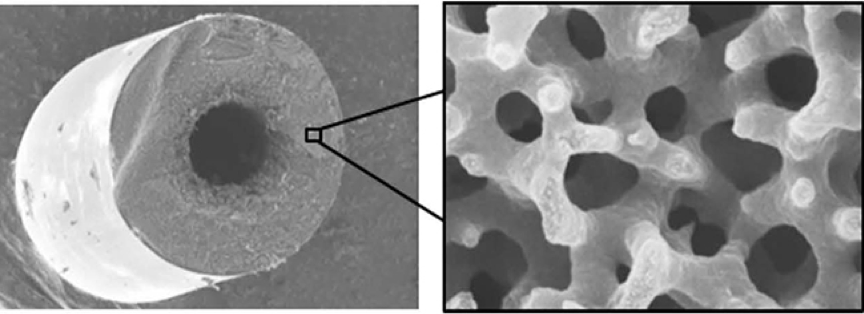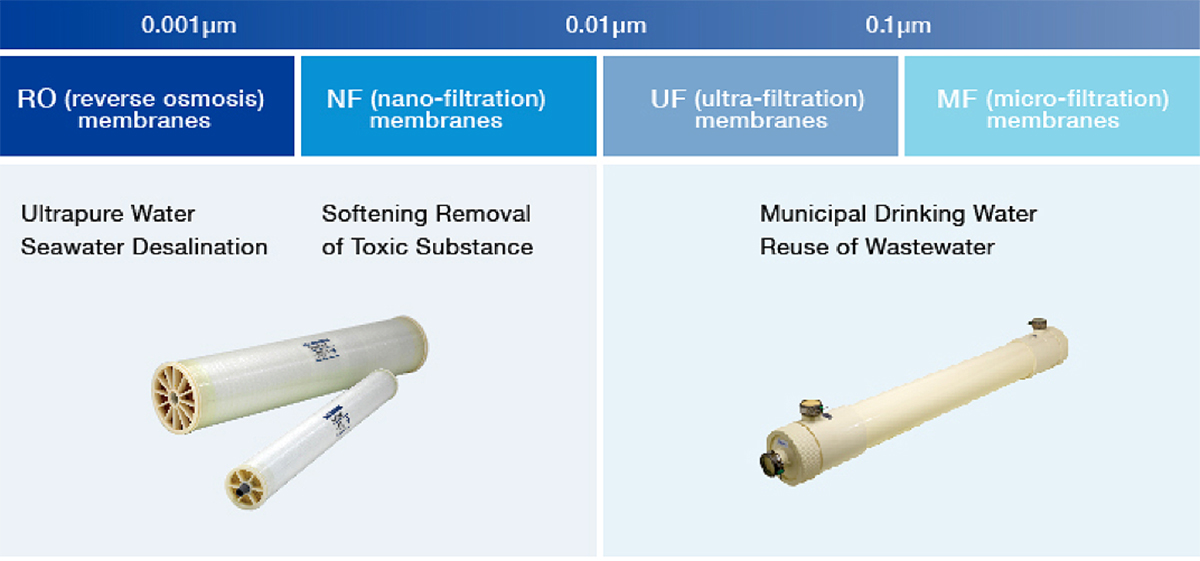Better Energy Efficiency with Carbon Fiber Composite Materials
Toray Industries, Inc.
Outline
Carbon fiber materials have excellent specific strength and modulus of elasticity. These characteristics can be used to improve the fuel efficiency of aircraft or to make energy use more efficient by boosting the efficiency of wind power generation.
Description
Light and strong, carbon fiber reinforced plastic (CFRP) is used in aircraft and automobiles to reduce their weight and improve fuel efficiency. Life cycle assessment (LCA), which evaluates the total environmental impact of a product from material production to product disposal, shows that the use of CFRP contributes significantly to CO2 emissions reduction. By utilizing its global development system to create high-performance and easily moldable carbon fiber composite materials, Toray aims to expand the scope of CFRP use in aircraft and further reduce CO2 emissions.
Wind is a leading form of clean energy, and wind turbines are being installed on a large scale in various regions, especially Europe. In order to increase wind power generation efficiency, larger turbine blades are needed. With conventional fiberglass composite materials, the blade is more likely to bend as it gets larger, and there is a risk that large blades could even hit the support tower and become damaged. However, by using highly-rigid CFRP to make the blades, both bending and weight can be reduced, and wind power generation with large and efficient blades can be realized. Toray aims to significantly reduce CO2 emissions during electricity generation by enabling this technology to be widely adopted and by promoting the use of highly efficient wind turbines.
Supplementary information
Toray Group Sustainability Vision
https://www.toray.com/sustainability/pdf/sustainability_e.pdf
Other Innovation Challenges
Gas separation using porous carbon fibers with continuous pore structure
Toray Industries, Inc.
Helping to realize a clean energy society with hydrogen utilization technology
Toray Industries, Inc.
Helping to reduce CO2 emissions through seawater desalination using RO membranes
Toray Industries, Inc.
Similar Innovation Challenges
Accelarating the penetration of renewable energy resources with “Open Energy System”
Sony Group Corporation
Achieving net-zero carbon emissions from plant factories using full artificial lighting
Taikisha Ltd.
Advanced technology for buildings providing energy-saving and comfortable indoor environment (under Net Zero Energy condition)
Mitsubishi Electric Corporation
AI control reduces base station power consumption by up to 50%
KDDI CORPORATION



